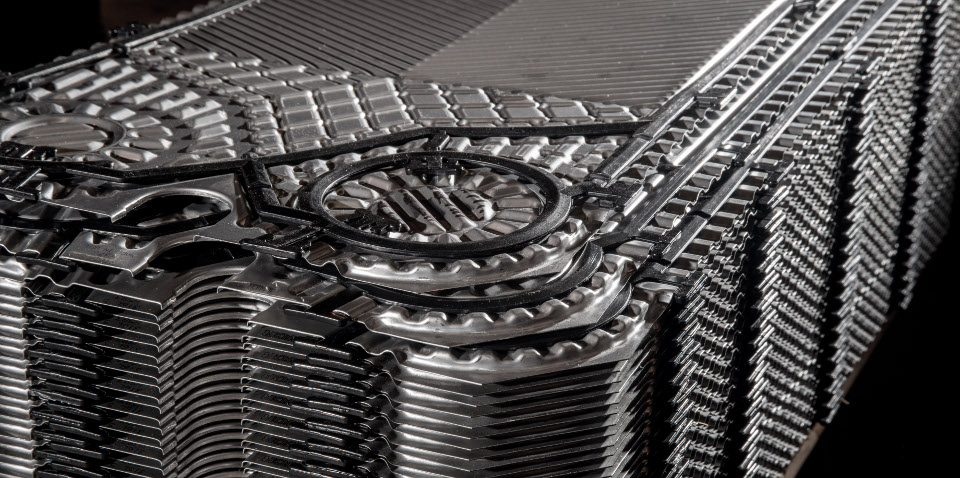Detailed description of plate for PHE

The plates are specially selected from various patterns so as to achieve optimum area and cost effective heat exchanger for each unit. These plates can be classified into three type, H type, L type, Mix type.

Plate Corrugate
Low angle channel arrangement for lower allowable pressure drops requirement applications;
Mixed channel arrangement for optional arrangement to gain the optimized performance;
High angle channels arrangement for higher thermal performance and allowable pressure drops requirement applications
The Standard Materials of plates
304 Stainless Steel
This is the lowest cost heat transfer plate material. It has low corrosion resistance and is usually only available in a thickness of 0.5mm. This type of heat transfer plate is typically used in HVAC applications.
316 Stainless Steel
This is the most common heat transfer plate material and is used in many applications. 316 stainless steel has a high corrosion resistance and is typically available in thickness from 0.5mm to 0.8mm.
Titanium
This type is very resistant to chemical attack, including most acids, chloride, seawater and chlorine chemicals. This thickness of titanium is usually from 0.5mm to 0.6mm.
Hastelloy C276
Other common names: Alloy C276, Hastelloy C, Inconel® C-276, Hastelloy C276.
Hastelloy C276 is a nickel-molybdenum-chromium superalloy with tungsten added for excellent corrosion resistance in a variety of harsh environments. Alloy C-276 is widely used in the harshest environments such as chemical processing, pollution control, pulp and paper production, industrial and municipal waste treatment, and acid natural gas recovery. The thickness can range from 0.6mm to 0.8mm.
SMO 254
Sandvik 254 SMO is a high-alloy austenitic stainless steel developed for use in seawater and other aggressive chloride-bearing media. Thickness available from 0.6mm to 0.8mm.